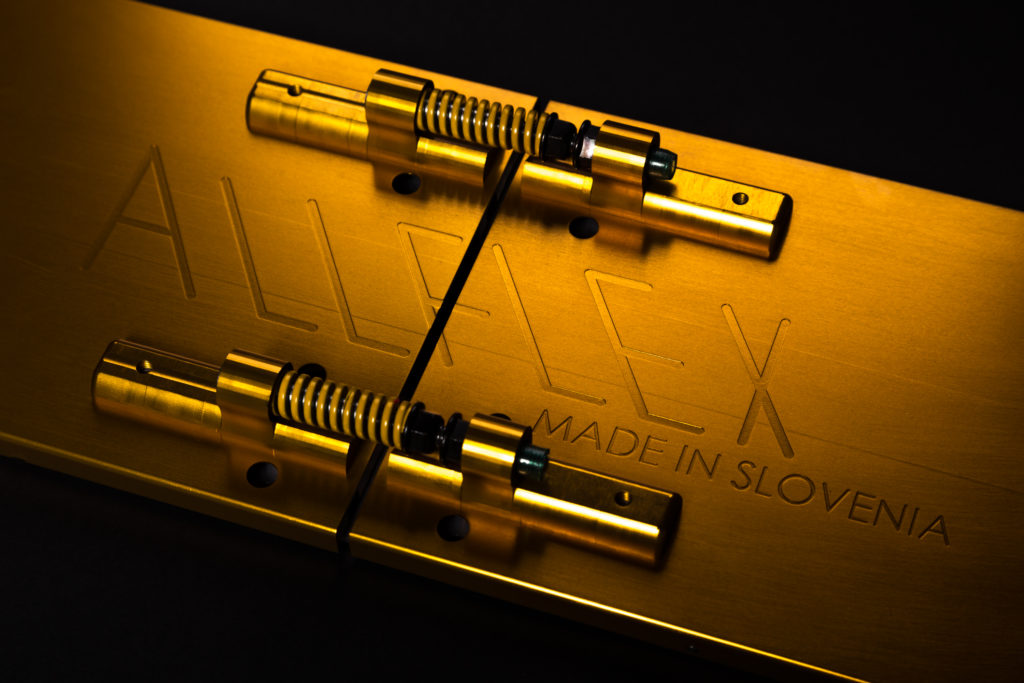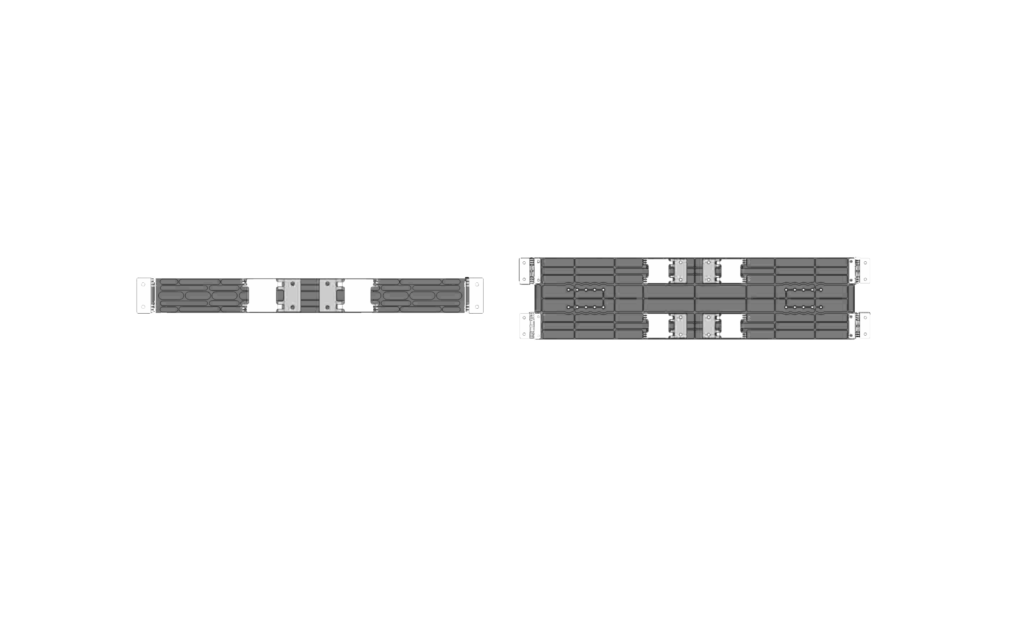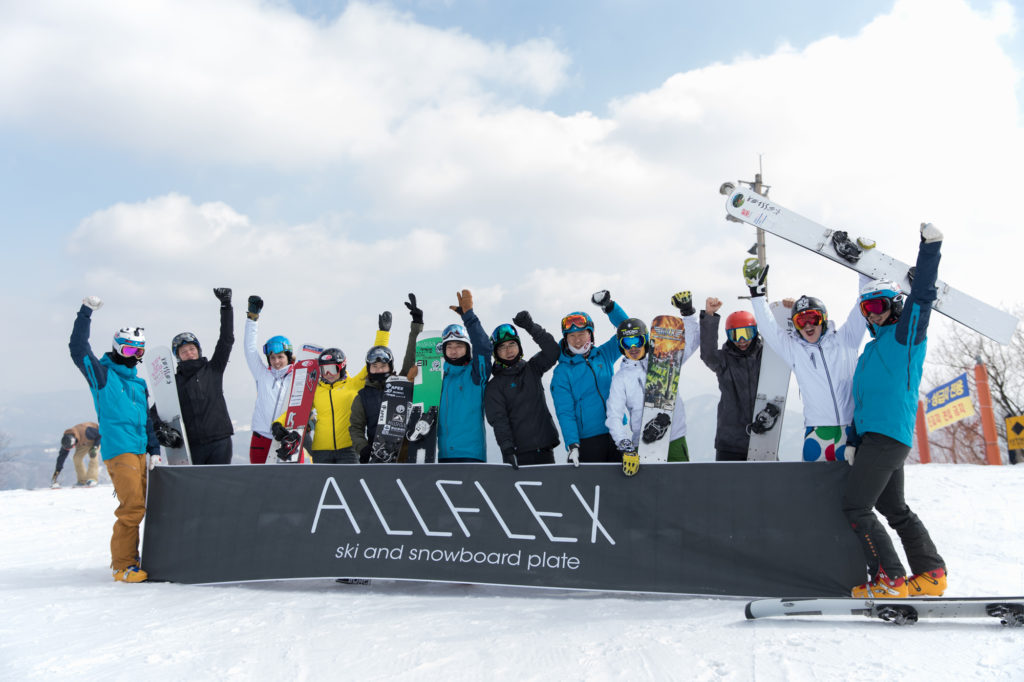
Over the years, engineers and developers in the ski and snowboard industry have continuously improved ski and snowboard plates to enhance speed, reduce vibrations during turns, and increase overall smoothness. Slovenian engineers have made significant contributions to this global development. A major breakthrough occurred on February 2, 2000, when Marjaz Vrhovnik won the World Cup slalom in Adelboden, becoming the first skier in the World Cup to use skis with a decreased sidecut radius—an innovation first introduced in snowboarding and later transferred to skiing.
The development of the first Allflex plates marked a turning point in the evolution of skiing and snowboarding equipment.

EQUIPMENT
The introduction of new ski plate construction led to significant changes in skiing technique, making it necessary to adapt other equipment as well. Constructors focused on ski boot soles, which became narrower, while ski plates expanded by a few millimeters. The main innovation was a platform between the ski and the ski binding.
However, the market was quickly flooded with baseplates that were all flawed because they restricted the ski’s ability to bend. Even when the plate was made in two parts, it became almost unitary once the boot was clamped in, limiting ski flexibility. The boot also restricted bending, creating a circular section. Due to the plastic deformation of the ski, nearly maximum firmness was required in attaching the ski bindings to prevent them from opening during extreme ski flex.
I addressed this problem with my invention of a plate, detailed in the 2002 patent filing (SI patent 20309 A “Conjunction of Ski or Snowboard Plate and Binding for Ski Boot”), which partially cancels out vibrations.
COMPETITORS
I produced similar plates using more durable materials for Rok Marguc, which he used during the 2011/2012 competition season. That season, Rok Marguc started gaining success, with my coaching support. Foreign competitors took notice, and I began making plates for athletes like Vic Wild and others. In 2013, I parted ways with Rok Marguc due to disagreements. Despite that, by the time of the Olympic Games, world-class competitors were eager to use the Allflex plate. Rok Flander and Žan Košir deserve much credit for its growing reputation. I worked closely with both athletes during training sessions, as the technique with the Allflex plate required adjustments.
For the Sochi Olympics, I customized plates for Vic Wild, Rok Flander, and Žan Košir, tailored to their individual riding styles. Both Vic and Žan reached their full potential using the plates, although Flander did not reach his maximum performance.
MEDIA
In 2003, sports reporters from the daily EKIPA invited me to a World Cup race in Sölden as an expert in the field. Between 2003 and 2014, I regularly wrote columns for EKIPA, providing commentary and analysis on male and female alpine skiing World Cup races. I occasionally continued this work even after 2014. On January 29, 2010, during the broadcast of the Kranjska Gora World Cup, I introduced the Allflex plate, for which I had received a European patent two years earlier.
GOAL
As similar Allflex plates are now appearing on the market, my goal is to ensure that the original snowboard plate model, which is still being sold today, remains true to the principles and design innovations that define Allflex. The first model includes all the key features that set it apart, and Allflex d.o.o. remains the only legal owner of the patent and authorized distributor of this technology.
Sincerely,
Aco Sitar

DESCRIPTION AND FEATURES OF THE ALLFLEX ANTI-VIBRATION PLATE
The Allflex anti-vibration plates are designed for both skiers and snowboarders. They offer a smoother experience, making turns much easier compared to other plates. The Allflex plate enhances grip and eliminates vibrations during turns, as it is not directly fastened to the ski or snowboard. Instead, the snowboard plate is mounted using four vertical and four horizontal rocker arms, which mutually cancel out vibrations.
WHAT IS ALLFLEX FOR?
•Unobstructed Flexibility: It allows the ski or snowboard to bend naturally without restriction.
•Vibration Dampening: It significantly reduces vibrations, enhancing comfort.
•Improved Grip: Provides an even grip along the edge, ensuring better control.
•Reduced Fatigue: Helps the skier or snowboarder stay less fatigued during longer sessions.
•Reduced Knee Pain: Decreases the risk of knee pain that can be caused by skiing or snowboarding.
HOW IT WORKS
•The horizontal line of the rocker arms’ axis causes the ski bindings to load by just 0.07 mm. All other positions keep the binding springs neutral.
•The vertical rocker arms at the front allow for horizontal oscillation of the rigid parts of the Allflex system by 4.5 mm, both at the front and back. On regular plates from other manufacturers, the spacing between the bindings increases by 2×4.5 mm, requiring the bindings to be tightened more, which increases the risk of injury as they may not release properly during a fall.
KEY FEATURES
1.Even Pressure Distribution: The horizontal rocker arms ensure pressure is evenly distributed along the entire edge, from the tip to the tail. This makes balancing easier and keeps the center of gravity steady, regardless of body position.
2.Vertical Movement: The horizontal rocker arms allow for a maximum vertical movement of 6.4 mm. This means full pressure increases the distance between the ski boot sole and the edge by up to 6.4 mm.
3.Complete Edge Grip: The Allflex system maintains full grip of the edge, even as the distance between the ski boot sole and the surface of the ski or snowboard oscillates between 0 and 6.4 mm. At the same time, it cancels out vibrations caused by curves or uneven terrain.
4.Shoe Compatibility: The Allflex system accommodates ski boot sizes ranging from 36 to 46. For smaller shoe sizes, the plate can be shortened, making it suitable for younger snowboarders and skiers, especially children.
5.Reduced Vibrations: Vibrations, which are common on hard slopes, are significantly reduced, resulting in a softer and more stable ride.
6.Minimal Effort: With the Allflex plate, skiers and snowboarders only need to control the tension of the bent ski or snowboard. Other plates require managing both the tension of the ski and the plate, along with the springs in the bindings, which load proportionally with the bending ski.
7.Injury Prevention: The Allflex plate minimizes the risk of injury caused by vibrations and lateral pressure on the knees and shins. Fewer and softer vibrations, thanks to the floating plate, make the skiing or snowboarding experience gentler.
8.Binding Adjustments: Unlike other plates that force skiers to tighten bindings to prevent unintentional release, the Allflex plate allows the ski to bend freely. This eliminates the need to tighten bindings excessively, thereby reducing injury risk.
The Allflex plate offers a revolutionary solution, allowing for more natural movement and significantly reducing the strain on the skier or snowboarder. It provides a smoother, safer, and more enjoyable experience by solving many of the common issues associated with traditional plates.
Subscribe And Get Discount